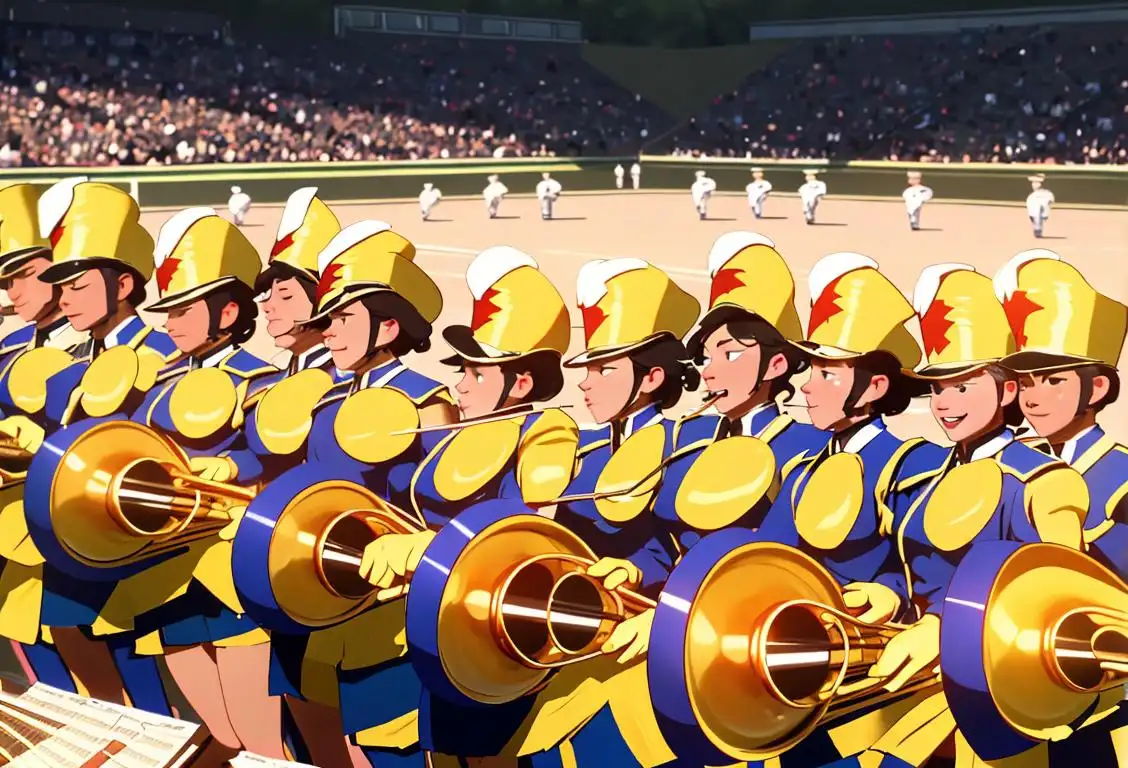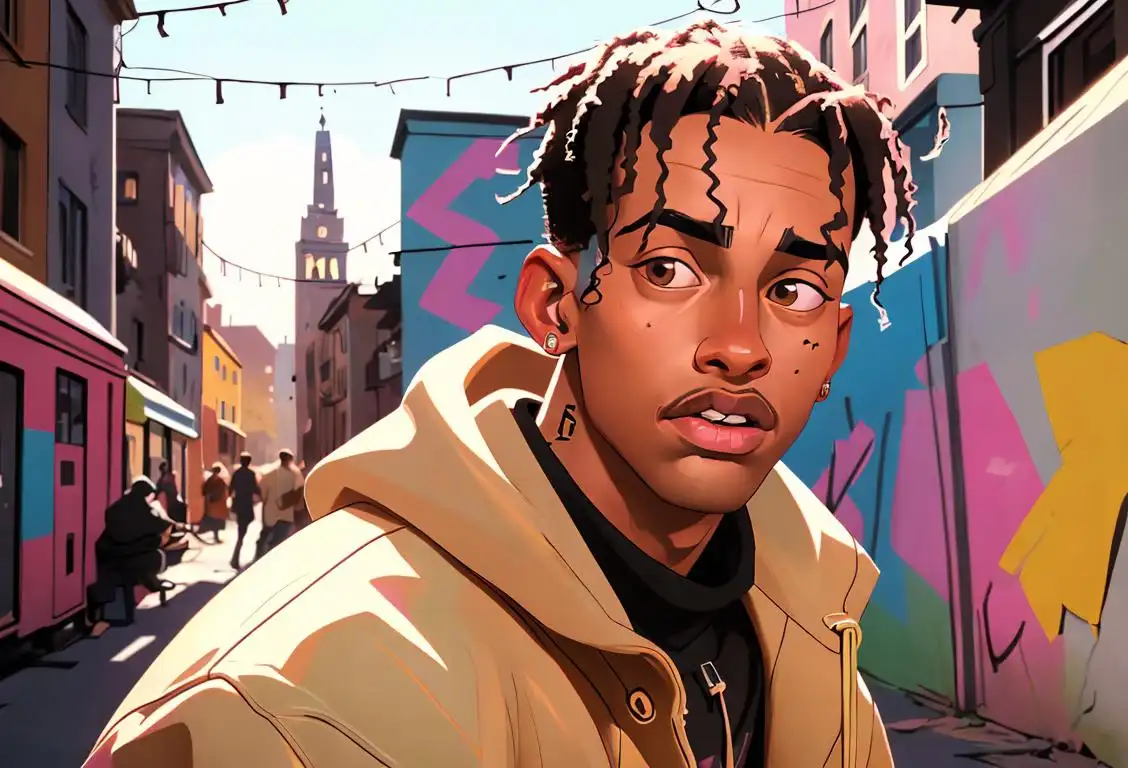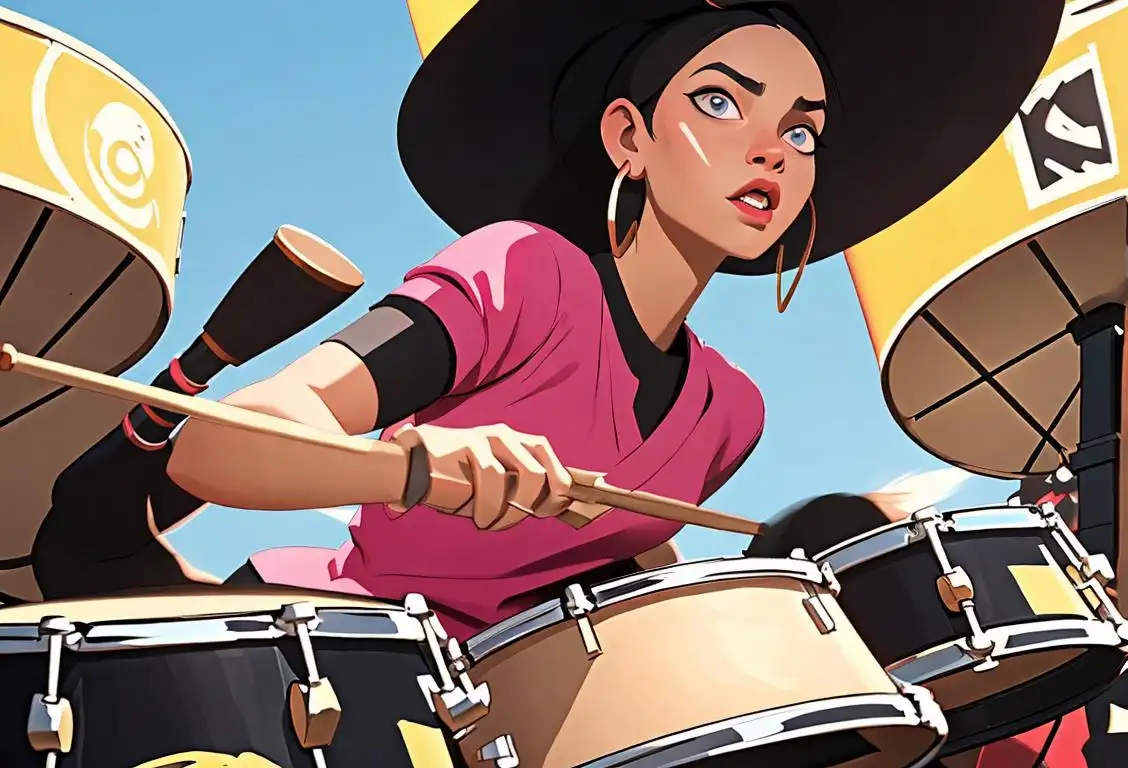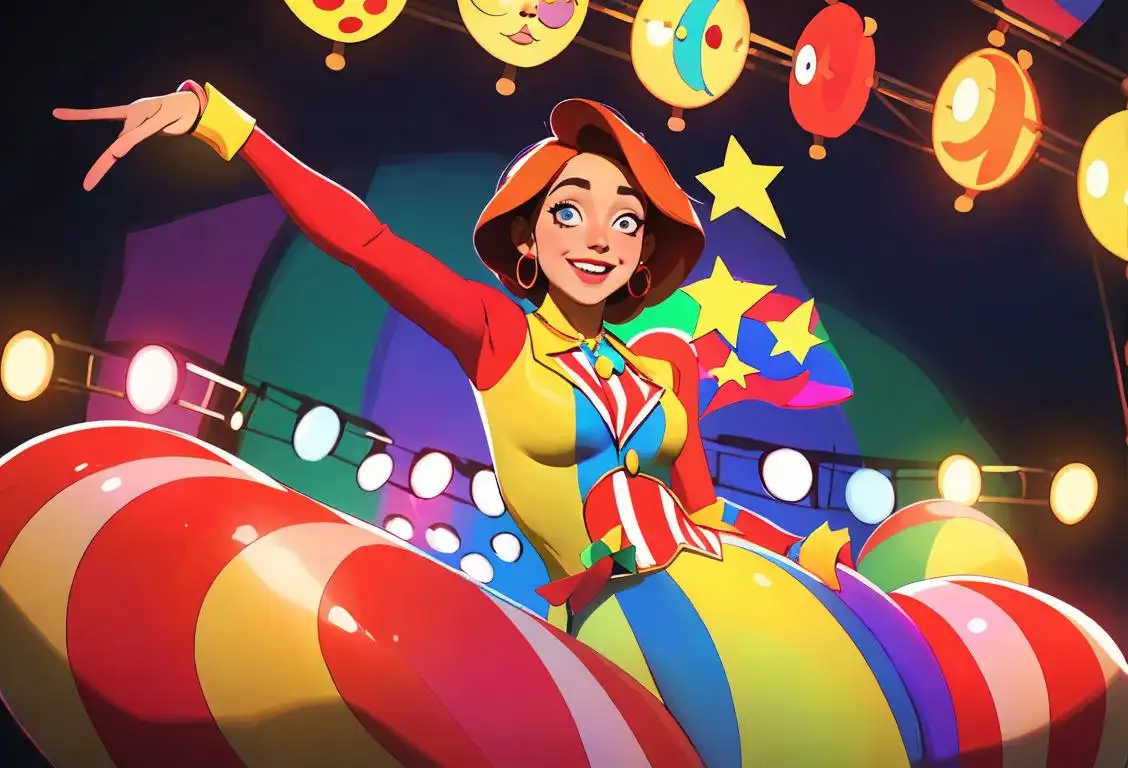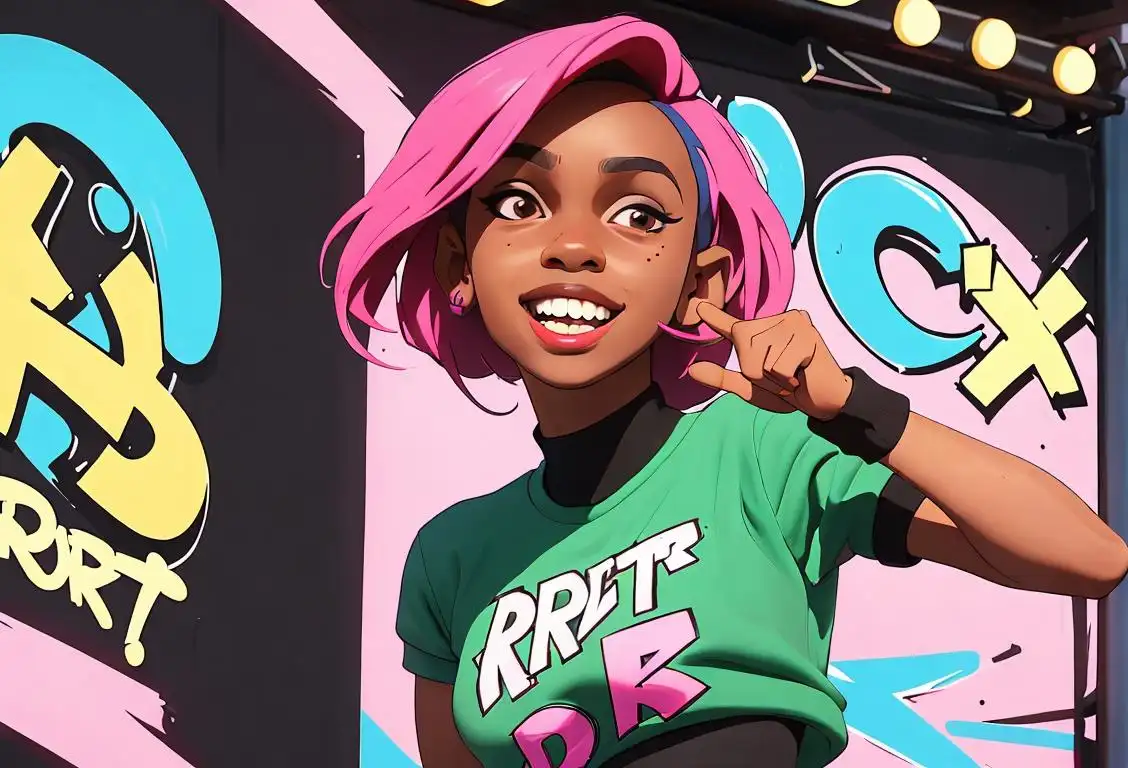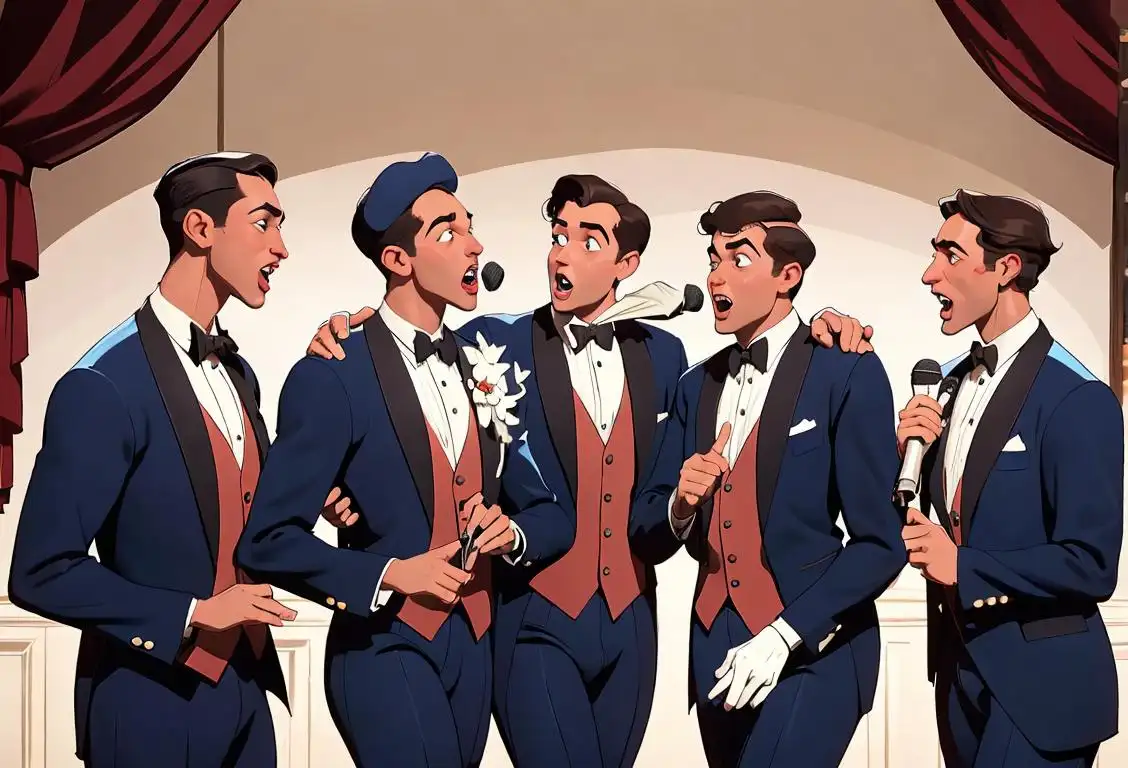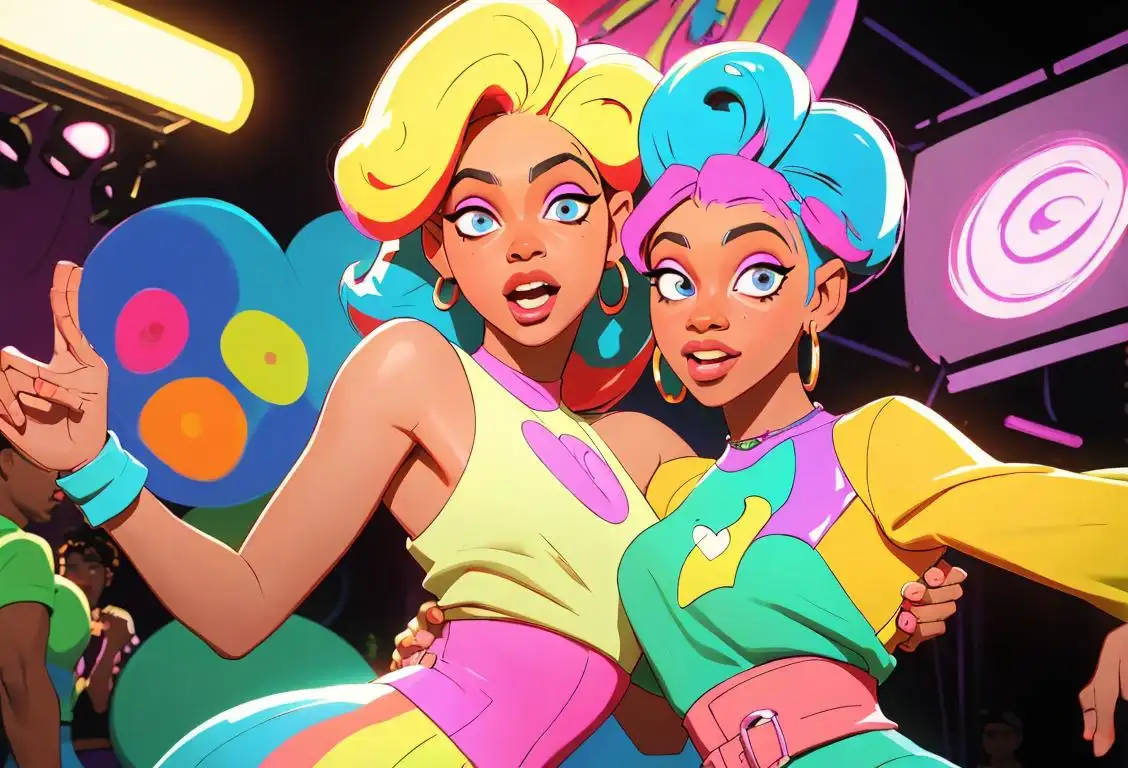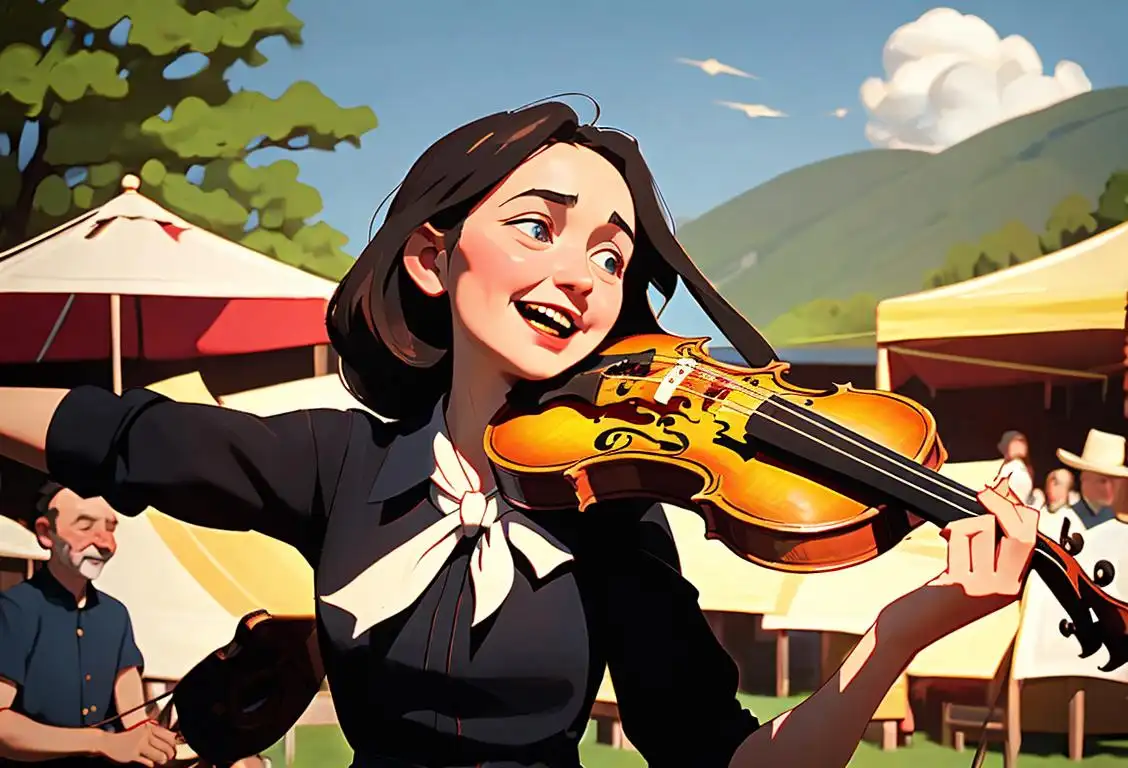National Trance Day
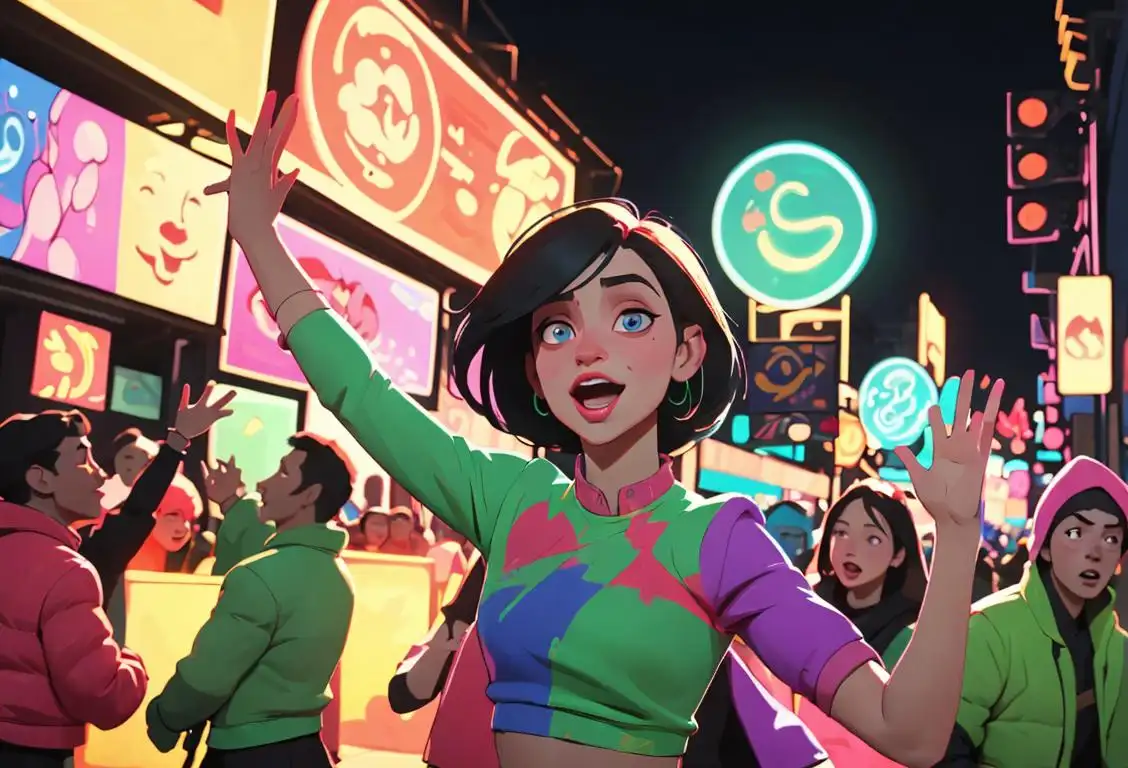
Hey there trance lovers! Get ready to put on your dancing shoes and lose yourself in the mesmerizing beats of National Trance Day!
When is Trance Day?
It's national trance day on the 31st July.
The Birth of Trance
Trance music, with its energetic beats and hypnotic melodies, has been captivating music lovers since the early 1990s. The genre emerged from the electronic dance music scene and quickly gained popularity across the globe. Trance music is characterized by its repetitive rhythms, soaring melodies, and a trance-like state it induces in its listeners.
On July 31, 2016, National Trance Day first made waves on the internet. Trance enthusiasts from all corners of the world came together to celebrate the genre that has given them endless hours of euphoria on the dance floor.
Celebrations and Events
On National Trance Day, clubs and electronic music venues host special trance-themed events, inviting renowned DJs and producers to take the stage and spin their latest trance tracks. Trance fans flock to these events, eager to immerse themselves in a night of music and dance.
Additionally, online communities and forums dedicated to trance music come alive with discussions, song recommendations, and live stream events. It's a time for fans and artists to connect, share their love for the genre, and discover new tracks.
How to Celebrate National Trance Day
If you're a die-hard trance fanatic or just looking to dip your toes into the genre, there are plenty of ways to celebrate National Trance Day. Here are a few ideas:
- Throw a trance-themed party at home, complete with glow sticks, neon decorations, and of course, the perfect trance playlist.
- Join an online trance community and take part in discussions, challenges, and live stream events.
- Put on your headphones, close your eyes, and let the music transport you to another dimension.
- Learn a few dance moves inspired by the trance culture and show off your skills on the dance floor.
Did You Know?
Did you know that the word "trance" originally comes from the Latin word "transire," which means "to cross over" or "to go beyond"? It perfectly captures the feeling of being transported to a different state of mind when listening to trance music.
History behind the term 'Trance'
1990
Birth of Trance
Trance music emerged in the early 1990s as a subgenre of electronic dance music. Its origin can be traced back to Germany, where it gained popularity in the underground club scene. Influenced by genres such as techno, house, and ambient music, trance is characterized by its repetitive beats, melodic layers, and entrancing rhythms.
1990
Birth of the term 'trance'
In the early 1990s, the term 'trance' emerged as a genre of electronic dance music. It was largely associated with the underground rave culture in Germany, where DJs began experimenting with a combination of techno, house, and ambient music. The hypnotic and entrancing nature of this new sound led to the term 'trance' being coined to describe the state of mind induced by the music.
1920
The Birth of Trance Music
Trance music emerged in the 1920s as a subgenre of electronic dance music. Its origins can be traced back to the experimental soundscape of early electronic instruments. Pioneers such as Karlheinz Stockhausen, a German composer, played a significant role in the development of trance-like repetitive patterns and the exploration of altered states of consciousness through music.
1850
Hypnotic Healing
In the mid-19th century, the term 'trance' was associated with mesmerism, a healing technique popularized by Franz Anton Mesmer. Mesmer claimed to induce a state of 'magnetic trance' in his patients, in which they would enter a deep sleep-like state.
1382
The Early Roots
The term 'trance' finds its origins in the late 14th century, derived from the Old French word 'transe' meaning 'fear' or 'passing'. However, the term did not have the same meaning as it does today. In this early stage, it was often used to describe a state of extreme fear or distress.
1990
The Birth of Trance Music
Trance music emerged in the late 1980s and gained mainstream popularity in the early 1990s. It originated from the electronic dance music (EDM) scene, blending elements of techno, house, and ambient music. Trance is characterized by its repetitive beats, melodic synthesizer patterns, and hypnotic rhythms that are designed to induce a trance-like state in the listener. The term 'trance' was first used to describe this genre of music in 1990.
1990
Birth of Trance
Trance music, a genre known for its hypnotic beats and melodic tunes, was born in the late 1980s and early 1990s. It emerged as an offshoot of electronic dance music (EDM) and quickly gained popularity in clubs and raves. Trance music is characterized by its repetitive rhythms, uplifting melodies, and ethereal or dreamlike qualities. The term 'trance' itself refers to the hypnotic and trance-like state often induced by the music, captivating listeners and transporting them to otherworldly realms of sonic bliss.
1990
The Birth of Trance
Trance, a genre of electronic dance music, emerged in the early 1990s. It originated in Germany and was influenced by techno, house, and ambient music. Trance music is characterized by a repetitive and hypnotic beat, melodic synthesizers, and soaring, ethereal vocals. DJs and music producers like Paul Oakenfold, Tiesto, and Armin van Buuren helped popularize trance and establish it as a distinct genre.
1890
The Birth of Hypnotism
The term 'trance' can be traced back to the late 19th century when the concept of hypnotism gained popularity. In 1890, the Scottish surgeon and writer James Braid coined the term 'hypnotism' which referred to a state of altered consciousness characterized by a deep relaxation and heightened suggestibility. This state is often referred to as a trance.
1960s
The Emergence of Contemporary Trance Music
During the 1960s, a new genre of electronic music emerged that would later become known as trance. Influenced by the psychedelic and progressive rock movements, artists began experimenting with synthesizers and electronic instruments to create hypnotic and repetitive soundscapes. The term 'trance' was eventually adopted to describe this unique style of music, reflecting its ability to induce a trance-like state of mind in listeners.
1993
Goa Trance and Psychedelic Influences
In 1993, a subgenre of trance called Goa trance emerged in the beach parties of Goa, India. It was heavily influenced by psychedelic rock, Indian classical music, and the use of mind-altering substances. Goa trance incorporated trippy melodies, complex layering of sounds, and distinctive 4/4 beats. This subgenre added a new dimension to the evolving trance scene.
1993
The Rise of Goa Trance
In the early 1990s, a subgenre of trance music known as 'Goa trance' emerged in Goa, India. Influenced by the hippie and psychedelic culture of the region, Goa trance featured a distinct sound characterized by its energetic beats, Eastern melodies, and spiritual undertones. The term 'Goa trance' was coined to differentiate this unique style from the broader trance genre.
1980
The Rise of Goa Trance
In the 1980s, a new form of trance music began to take shape. Known as Goa Trance, this style originated in Goa, India, where it became closely associated with the hippie and psychedelic culture of the region. The energetic and hypnotic beats, accompanied by acid sounds and trippy melodies, gave Goa Trance its unique identity and attracted a dedicated following.
1993
Trance goes mainstream
In 1993, trance started to gain traction in the mainstream music scene. German DJ and producer Jam El Mar released the track 'The Age of Love', which became an anthem for the burgeoning trance movement. The uplifting melodies, pulsating beats, and repetitive hypnotic hooks of trance quickly resonated with audiences worldwide, paving the way for its popularization.
1993
Formation of Goa Trance
Goa Trance, a subgenre of trance, emerged in the early 1990s in Goa, a region in India known for its vibrant and psychedelic party culture. The term 'Goa' refers to the place of its birth. Goa Trance is known for its hypnotic melodies, pulsating basslines, and psychedelic soundscapes. It incorporates elements of Indian classical music and Eastern spirituality, creating a unique musical experience.
1599
Transition to a Transcendent State
During the late 16th century, the term 'trance' began to shift in meaning. It started to be associated with a state of spiritual or mystical ecstasy, where individuals experienced a heightened level of consciousness or communion with the divine. This transformation in meaning laid the foundation for the trance states we know today.
1892
Scientific Study
The term 'trance' gained more recognition in 1892 when the British Medical Association formed a committee to investigate mesmerism. The committee concluded that the phenomena observed during mesmerism sessions were best described as various stages of trance.
1992
Rise of Goa Trance
In 1992, a subgenre of trance called Goa Trance was birthed in the Indian state of Goa. Influenced by the region's psychedelic culture, Goa Trance incorporated hallucinatory sounds, Eastern influences, and a spiritual vibe. The genre gained international recognition and significantly contributed to the global trance scene. Goa Trance parties became iconic gatherings where people from all over the world would come together to experience the transcendental and mind-altering effects of the music.
1930s
Hypnosis and Entertainment
In the 1930s, 'trance' became closely associated with hypnosis. Stage hypnotists used the term to describe the altered state of consciousness induced in their subjects, in which they would be highly suggestible and responsive to commands.
1996
Trance Goes Global
By the mid-1990s, trance music had spread beyond its origins in Goa and gained popularity worldwide. Artists like Paul van Dyk, Armin van Buuren, and Tiësto became synonymous with the trance scene and helped popularize the genre through their performances and productions. Trance music festivals, such as the legendary Love Parade in Berlin, further propelled the global phenomenon. Trance had firmly established itself as a captivating and energetic genre of electronic music.
1990s
The Golden Era of Trance
The 1990s marked the golden era of trance music, with the genre gaining immense popularity around the world. DJs and producers like Paul Oakenfold, Armin van Buuren, and Tiesto played a significant role in popularizing trance, attracting large audiences to high-energy raves and club events. Trance music was characterized by its uplifting melodies, driving beats, and ethereal atmospheres, creating a euphoric and transcendent experience for listeners.
1990
Trance Goes Mainstream
The 1990s marked the entry of trance into the mainstream music scene. Artists like Paul van Dyk, Tiësto, and Armin van Buuren gained popularity and helped bring trance to a wider audience. The euphoric melodies, uplifting vocals, and pulsating beats became characteristic of the genre, creating a sense of transcendent bliss on the dance floors around the world.
1997
The birth of progressive trance
By 1997, trance had diversified into various subgenres, including the birth of progressive trance. DJs and producers like Paul Oakenfold and Sasha began incorporating more progressive elements into their sets, blending the driving beats of trance with atmospheric and melodic elements. Progressive trance became known for its evolving, journey-like soundscapes, captivating listeners with its layered and intricate compositions.
1997
Trance Goes Mainstream
By the late 1990s, trance had gained significant popularity and started to infiltrate the mainstream music scene. DJ Tiesto, with his hit remixes and albums, played a crucial role in bringing trance to a wider audience. Trance music was played at massive music festivals, and tracks like Robert Miles' 'Children' became international chart-toppers. The euphoric and uplifting nature of trance music captivated listeners across the globe.
1997
Commercial Success
Trance music started to achieve commercial success in the late 1990s. Artists like Paul van Dyk, Tiësto, and Armin van Buuren gained mainstream popularity, and trance tracks started charting worldwide. The catchy hooks, elevating melodies, and infectious energy of trance captivated a broad audience. Trance anthems like Robert Miles' 'Children' and DJ Sakin's 'Protect Your Mind' became global hits, solidifying trance's presence in the music industry.
1927
The Birth of Trance Music
In the 20th century, specifically in 1927, the term 'trance' expanded its reach into the realm of music. It found its way into discussions surrounding hypnotic or repetitive musical patterns that induce an altered state of consciousness. This marked the birth of trance music as a genre, characterized by its hypnotic beats and melodic progression, often leading to transcendental experiences for the listeners.
1995
Commercial Success and Globalization
By the mid-1990s, trance began to gain commercial success and started to spread globally. Prominent trance DJs and producers, such as Paul Oakenfold, Armin van Buuren, and Tiësto, popularized the genre through their performances and releases. Trance music became a staple in dance clubs and festivals around the world, attracting a dedicated fan base and influencing the electronic music scene as a whole.
1990s
The Rise of Trance Culture
During the 1990s, trance music experienced a surge in popularity and became a prominent subculture within electronic dance music. Raves and festivals dedicated to trance emerged, attracting thousands of enthusiastic followers. The genre found its global reach, with artists and DJs from various countries contributing to its evolution. This period marked the establishment of trance as a distinct and influential genre within the music industry.
1990s
Rise of Trance Music
The term 'trance' took on a new meaning in the 1990s with the emergence of trance music. Trance music is characterized by its repetitive beats and melodic synthesizer patterns, designed to create an immersive and hypnotic experience for the listener.
2000
Evolution of Trance Subgenres
During the 2000s, trance continued to evolve and diversify, giving rise to various subgenres. Progressive trance emerged, characterized by a more atmospheric and layered sound. Psytrance, a fusion of psychedelic music and trance, gained popularity for its energetic and mind-altering qualities. Other notable subgenres include uplifting trance, vocal trance, and tech trance. The evolution of subgenres expanded the sonic possibilities within the trance genre.
2000
Trance Evolves: Progressive and Vocal Trance
Trance continued to evolve in the 2000s, diversifying into subgenres like progressive trance and vocal trance. Progressive trance incorporated elements from progressive house, creating longer tracks with intricate build-ups and gradual transitions. Vocal trance featured strong vocals and emotionally charged lyrics, opening up the genre to a broader audience. Artists like Above & Beyond and Dash Berlin gained fame in the world of vocal trance.
2000s
Expansion and Subgenres
During the 2000s, trance continued to evolve and diversify. Various subgenres emerged, including progressive trance, uplifting trance, and vocal trance. Progressive trance incorporated elements of progressive house, while uplifting trance focused on euphoric and emotionally uplifting melodies. Vocal trance featured female vocals and became immensely popular, with artists like Above & Beyond and Dash Berlin leading the way. Trance's versatility allowed it to appeal to different tastes and maintain its relevance.
1993
ASOT and Trance Epidemic
In 1993, Armin van Buuren started his radio show 'A State of Trance' (ASOT), which rapidly gained a massive fan base. ASOT became a prominent platform for showcasing trance music's latest releases and emerging talents. This radio show played a crucial role in popularizing trance further and contributed to the genre's global expansion, leading to a true trance epidemic.
1999
Trance goes global
By the late 1990s, trance had become a global phenomenon. Trance festivals began to emerge, attracting thousands of devoted fans from around the world. The iconic dance event, Trance Energy, was first held in the Netherlands in 1999 and quickly became one of the largest trance festivals, showcasing the genre's biggest artists and pushing boundaries with innovative stage designs and production.
2000
Trance's Evolution: Progressive Trance and Vocal Trance
In the early 2000s, trance music underwent further evolution, leading to the emergence of subgenres like progressive trance and vocal trance. Progressive trance incorporated elements of progressive house, featuring longer, more intricate compositions with evolving melodies. Vocal trance, on the other hand, emphasized the inclusion of vocals, often uplifting and emotional in nature, into the track composition. These subgenres expanded the sonic landscape of trance music, attracting a wider audience and diversifying its appeal.
2000s
Trance Evolves and Diversifies
In the 2000s, trance music evolved and diversified, branching out into various subgenres. Progressive trance, psytrance, vocal trance, and uplifting trance emerged as distinct styles within the broader trance genre. The introduction of new production techniques and advancements in technology allowed artists to push the boundaries of sound design and create increasingly intricate and immersive compositions. Trance continued to captivate audiences around the world and became a staple in electronic music festivals.
2010
Trance Today: A Global Phenomenon
Trance music remains a global phenomenon, with vibrant scenes and dedicated fans in many countries. Trance festivals, such as A State of Trance (ASOT), Tomorrowland, and Electric Daisy Carnival (EDC), attract thousands of attendees worldwide. The genre has evolved further with the rise of subgenres like psytrance and uplifting trance. Trance continues to evolve, adapt, and captivate listeners with its enchanting melodies and infectious energy.
2000s
Commercial success and mainstream integration
In the early 2000s, trance continued to gain commercial success and started to integrate into the mainstream music industry. Superstar DJs like Tiesto, Armin van Buuren, and Above & Beyond brought trance to new heights, headlining major music festivals and collaborating with mainstream artists. Trance also found its way into popular culture, being featured in movies, TV shows, and video games, further solidifying its influence on contemporary music.
2010
Trance Today: A Global Phenomenon
Trance music continues to thrive in the modern music landscape. The genre has evolved and incorporated influences from various styles, including psytrance, uplifting trance, and tech trance. Trance festivals, such as A State of Trance (ASOT) and Dreamstate, draw massive crowds of passionate fans from around the world. Additionally, trance music remains an integral part of the electronic dance music culture, with dedicated labels, radio shows, and artists continuing to push the boundaries of this captivating genre.
2010s
Trance Festivals and Global Reach
Trance festivals, such as A State of Trance (ASOT), Dreamstate, and Transmission, became widespread during the 2010s, attracting thousands of dedicated fans from around the globe. These events showcased the biggest trance artists, mesmerizing visuals, and immersive experiences. Trance also found its place in mainstream pop culture, with artists like Lady Gaga and Britney Spears incorporating trance influences into their music. Trance's global reach continues to grow, with dedicated communities and events spanning continents.
2010
Trance in the Digital Age
With the advent of digital technology and online platforms, trance music further proliferated in the 2010s. DJ mix podcasts, streaming services, and social media platforms provided new avenues for artists to connect with their audience and promote their music. Trance festivals, such as Tomorrowland and A State of Trance, attracted massive crowds, solidifying the genre's popularity and global reach. Trance remains a beloved genre among electronic music enthusiasts and continues to evolve with new sounds and styles.
Present Day
Trance's Enduring Legacy
Today, trance music continues to have a dedicated fan base and remains a prominent genre within the electronic music scene. Its distinct blend of euphoric melodies, driving beats, and transcendental atmospheres still captivates audiences, providing a transformative and immersive experience on dance floors and at music festivals worldwide. The term 'trance' has become synonymous with a wide range of musical styles and has left a lasting cultural impact on the world of music.
Present
Trance in the Modern Era
Today, trance music continues to captivate audiences around the world. It has diversified into various sub-genres, including progressive trance, uplifting trance, and psytrance, each with its unique characteristics. Trance music has also transcended the boundaries of the raving subculture, gaining mainstream recognition and influencing other genres of music. Its hypnotic and euphoric soundscapes create a sense of unity and introspection, providing an escape from the mundane and a gateway to inner exploration.
2000s
Global Popularity
Trance music gained global popularity in the 2000s, with numerous trance festivals and events attracting thousands of fans around the world. The term 'trance' became synonymous with the high-energy, euphoric sound that defined the genre.
2000
Trance Evolves: Progressive and Psychedelic Trance
The turn of the millennium witnessed the further evolution of trance music. Progressive trance introduced complex arrangements, layered melodies, and interconnected soundscapes, pushing the boundaries of the genre. Simultaneously, psychedelic trance, also known as psytrance, blended trance elements with psychedelic sounds and culture, creating a distinct fusion of electronic music genres.
2010
Trance Today: Diverse Subgenres
In recent years, trance music has diversified into various subgenres, catering to different preferences and expanding its sonic palette. Subgenres like uplifting trance, tech trance, vocal trance, and hard trance offer distinct variations of the genre, each with its own fan base and unique characteristics. Trance festivals and events continue to attract passionate music lovers worldwide, ensuring the genre's enduring popularity.
Present
Evolution and Subgenres
In the present day, trance music continues to evolve and diversify, giving rise to various subgenres like progressive trance, uplifting trance, and psytrance. The term 'trance' has become deeply ingrained in the music industry and has transcended its origins in mesmerism and hypnosis.
Did you know?
Did you know that the word "trance" originally comes from the Latin word "transire," which means "to cross over" or "to go beyond"?Tagged
celebration music entertainment dance online communityFirst identified
31st July 2016Most mentioned on
31st July 2016Total mentions
4Other days
Trance Day
Dab On Britbongs Day
Marching Band Day
Travis Scott Day
Drummers Day
Showtime Day
Krept And Konan Day
Barbershop Quartet Day
Get Funky Day
Fiddle Day
